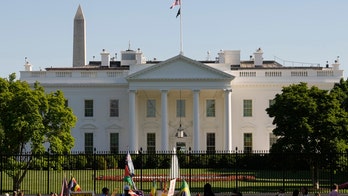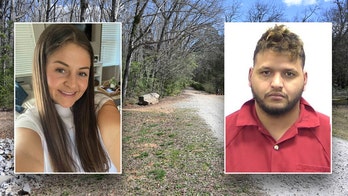Tim Kaine shows off his Spanish in appeal to Latinos
Hillary Clinton's running mate, Sen. Tim Kaine of Virginia, made his debut alongside Clinton in the crucial battleground state of Florida on Saturday afternoon.
Philadelphia – Presumptive Democratic presidential nominee Hillary Clinton's choice of vice-presidential running mate has stirred up a lot of debate at the Democratic National Convention.
While Clinton's choice of Sen. Tim Kaine of Virginia as her running mate has drawn the ire of supporters of Bernie Sanders – as well as the Vermont lawmaker himself – and abortion rights activists, some of his most vocal critics have been Latinos.
Despite Kaine’s fluency in Spanish and his time spent as a missionary in Honduras, many Latinos were angered with the Clinton camp after months of speculation that the former Secretary of State would choose a Latino running mate.
“I think Hillary should have considered the fact that we are a force to be reckoned with, and it should have been a Latino candidate,” said Vilma Colom, President of Northern Illinois Chapter of the National Conference of Puerto Rican Women. “I liked [former Secretary of Interior] Ken Salazar and [Secretary of Labor] Thomas Perez.”
On Friday, Clinton introduced Kaine to a heavily Hispanic audience in Miami. During his first appearance as her running mate, Kaine showed off his linguistic skills by peppering his speech with Spanish.
“We’re going to be compañeros de alma [soul mates] in this great lucha [fight] ahead,” he said of Clinton in the upcoming general election battle against Republican nominee Donald Trump.
His Spanglish speech was met with mixed reactions, with some seeing the senator’s language skills as an obvious advantage in helping Democrats drive Latinos to the polls.
But others were less impressed.
Robert Rodriguez, a delegate from Colorado, said Spanish fluency is not meaningful to him.
"I don't speak Spanish," he said. "You wonder, when is it going to be our time?" Rodriguez said, adding he would have liked to have seen Ken Salazar as a candidate. "All the Latinos on the short list would have been good choices."
Rodriguez said that while he wanted to see a Latino running mate, "I'm not going to throw a tantrum over it."
Isabel Framer, secretary and treasurer of the DNC Hispanic Caucus, said that, while she was hoping that Clinton would pick a Latino VP, she understands the decision.
“I figured there are some people that are going to be disappointed,” she said. “But Hillary knows what she needs and that’s the bottom line.”
Some saw Clinton’s choice of Kaine as a sign that her campaign is taking the Hispanic vote for granted by passing on at least three viable Latino candidates.
More than any other time in the history of the United States, it seemed that 2016 would be the year that a major political party could have a Hispanic candidate on its ticket. The Republican nominee Donald Trump’s controversial rhetoric on immigration and border security paired with President Barack Obama’s broken promises of immigration reform during his two terms in office catapulted the Latino vote to the forefront this campaign season.
On the short list for VP were three Hispanic stars in the Democratic Party.
There was Housing and Urban Development Secretary Julián Castro, a 41-year-old Mexican-American who sprung onto the scene with a captivating keynote address at the 2012 Democratic National Convention. Castro said Saturday he was “disappointed” he wasn’t chosen by Clinton but “confident she will get strong support” from Latinos.”
Then there was Perez, a Dominican-American and former assistant attorney general for civil rights for the Department of Justice. During his time in the federal government, Perez has been known as a staunch defender of minority rights. He oversaw the challenge to Texas’s voter ID law in 2011.
And finally, there was Rep. Xavier Becerra of California – a 20-plus-year veteran of the House of Representatives who was former chair of the Congressional Hispanic Caucus. Immigration has been one of the most important issues for Becerra – he is a strong supporter of the DREAM Act, comprehensive immigration reform, and a major proponent of Obama’s Deferred Action for Childhood Arrivals Program (DACA).
But in the end, Clinton officials said the choice came down to picking a running mate who could ultimately step in as president, if necessary. The top consideration for the campaign was experience – and that was something that Castro was seen as lacking. Despite Perez and Becerra’s long tenure in civil service, neither is seen as having the foreign policy chops that Kaine has during a time in which national security is at the forefront of many voter’s minds.
Resumés aside, the pick of a white male from a battleground state is also seen as a politically savvy move by the Clinton campaign to try to counter Trump’s efforts to bring out more working-class white voters.
Some Latinos, however, see the Kaine decision as “safe” and one that will alienate and not energize progressive Sanders supporters to go out and vote for Clinton.
“As a politician, I think she made the right move. As a Latina, I think she made a bad move,” Colom, a longtime Clinton supporter, explained. “I’m a little concerned because I feel that a lot of people in our community are not happy with that. And I’m hoping that they don’t stay home and not vote because if they stay home, just like a lot of Bernie Sanders people, Trump is going to win.”
This brings up a question in the minds of political strategists over how important it is for a candidate to speak Spanish. A Pew Research Center study in January showed that nearly half of America’s 28 million Hispanic eligible voters are millennials who increasingly consider English as their primary language and who identify with the United States as their home.
Some wonder whether Clinton should have chosen a younger or more progressive running mate or a minority to energize a portion of her base that is moving farther to the left and feels burned by the system.
“This was an opportunity for her to do that, and I think this pick might backfire on her,” Colom said on Monday.
According to a Fox News Latino poll, 80 percent of Latino voters said that a Hispanic vice presidential pick would make no difference in deciding whether or not they would vote for Clinton.
At the end of the day, this election could come down to voter participation rates. At just 48 percent, the Hispanic voter participation rate is 13 points lower than that of the general public. Logically, Clinton’s pick of Kaine checks off all the boxes she needs to counter Trump’s strategy of winning white voters in rust belt states like Pennsylvania and Ohio.
But will Kaine’s connection to the Hispanic community be enough to draw them to the polls in large numbers in November?
Manny Rodriguez, Robert’s father and a delegate from Colorado attending his eighth Democratic convention, believes a fear of Trump will drive enough Latinos to the polls as long as there is organization.
“I’m a party unity guy, and I know what Hillary is going to do for us,” said Rodriguez. “When I go out and get out the vote, it’s just voting against Trump. Nobody wants Trump.”





